Processing Kunda Cambrian clay. Dug on October 7th 2020.
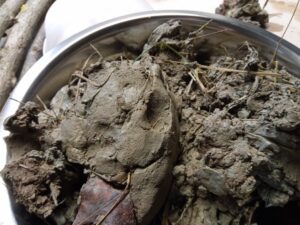
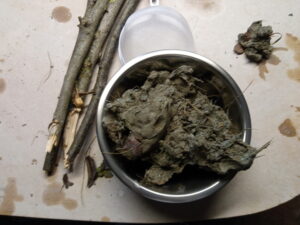
Clay in unprocessed state, containing grass, rocks, and different unmixed impurities of clay.
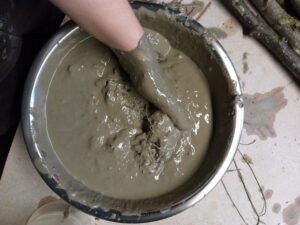
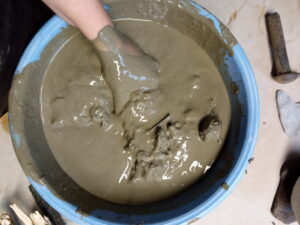

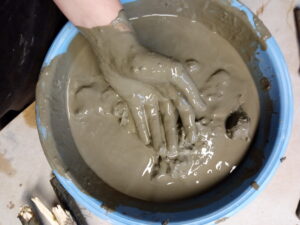
Mixing the clay with hands down to a slip by gradually adding water and mulching out the lumps.
The feeling of the clay being broken down into this glossy slip was an immediate exciting contact.
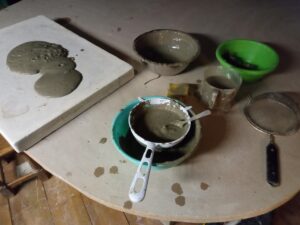
Sieving out the pulp leaving only pure clean slip. Then pouring this slip onto the thick plaster slab to pull out the moisture overnight, to return to a leather hard plasticity.
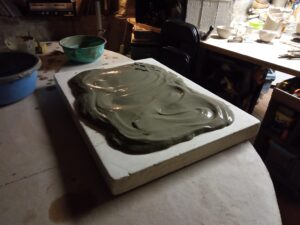
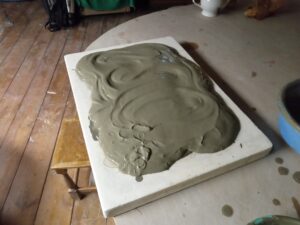


The next morning:
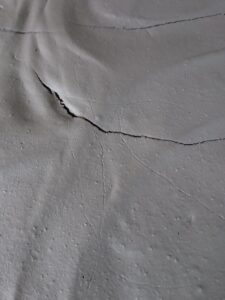

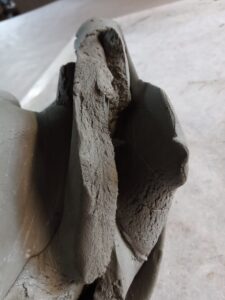
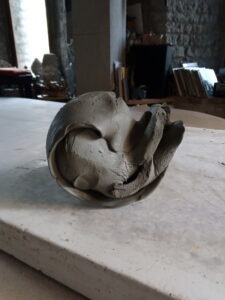
Ram’s head kneading. Prepared clay, ready.
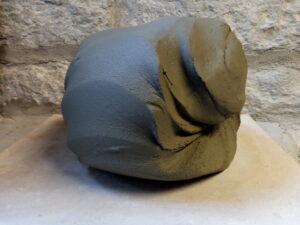
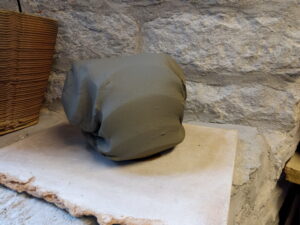
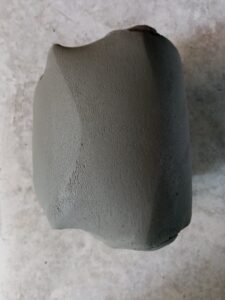
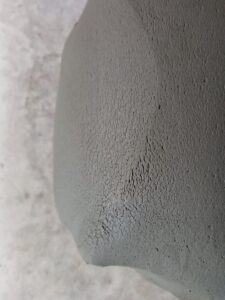
This clay fires to around a maximum of 1000c. It is mostly used for bricks and tiles within the industries using it in Estonia. It is a low temperature earthenware. When fired it turns to a red terracotta. The blue green colour of this clay is surprising in contrast to it’s fired colour. This is as a result of the iron within the clay having been trapped, unable to oxidise.
Having found, dug and processed the clay I feel it has a real depth. The surface once fired, holding the colour of the newly oxidised iron, after 541-485 million years of being held under the surface.
From my journey and my carrying I feel an emotional attachment and engagement to the material. The memory and physicality of sourcing it provides me with a full understanding, not only of the clay itself but of the landscape that I am in and interacting with. Much more so than cutting open a plastic bag of pre-prepared clay.

